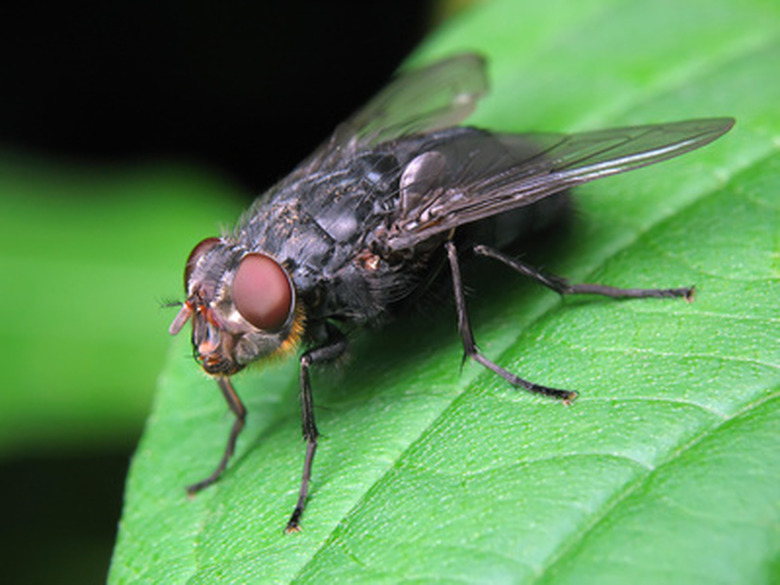Signs Of A Healthy Venus Fly Trap
Venus fly traps are carnivorous plants, meaning they have the ability to digest insects that land on their heads. It is a common misconception, however, that they need to eat insects in order to survive, according to Fly Trap Care. Healthy venus fly traps need little more than sunlight and clean, pure water in order to survive. If you're fly trap isn't getting the right kind of water and light, or if it's hunting head is activated too many times, it will start to show signs of wear and tear. Knowing what you plant should look like at its peak will help you make sure it stays as healthy as possible.
Open, Colorful Lobes
Venus fly trap lobes are the parts of the plant that snap closed when the sensitive trigger hairs are stimulated. In a healthy plant, the lobes are open and appear supple and fleshy. The trigger hairs on the inside, as well as the hairs along the edge of the lobes, are straight and intact. When a fly trap snaps closed around a fly, the outsides of the lobes remain green and supple and eventually reopen. If the fly trap closes around something it doesn't have the ability to digest, like a french fry, for example, its lobes will turn black and rot as the french fry rots.
- Venus fly traps are carnivorous plants, meaning they have the ability to digest insects that land on their heads.
- If the fly trap closes around something it doesn't have the ability to digest, like a french fry, for example, its lobes will turn black and rot as the french fry rots.
Snesitive Lobes
If your venus fly trap is healthy, its lobes will snap shut quickly when the trigger hairs are stimulated. Because venus fly traps don't need to eat flies to survive, they aren't designed to snap closed repeatedly. If you poke your fly trap to show it off, or if you feed it flies too often, its trigger hairs will lose sensitivity and your plant will be less responsive. While this may not seem to affect the plant at the time, it actually slows the plant's growth as too much energy is spent snapping opening and closing the lobes. If your plant is not growing as much as you'd like it to, monitor how often the heads are closing.
Flowers
Venus fly traps have to be pretty healthy, happy and stable in order to flower. Some people never see their fly traps flower. If your plant produces a shoot from the middle that starts to bud, you can be sure your doing something right. Still, according to Fly Trap Care, flowering can rob your plant of energy it needs to grow. If you want a flowering fly trap, leave the shoot in tact. If you want a larger fly trap with more lobes, but back the shoot before it gets a chance to flower. The fly trap will use this extra energy to grow.
- If your venus fly trap is healthy, its lobes will snap shut quickly when the trigger hairs are stimulated.
- If you want a larger fly trap with more lobes, but back the shoot before it gets a chance to flower.
Dormancy
If your entire plant dies back for a few months out of the year, you may become alarmed and think your plant is dying, but this is actually the sign of a healthy plant. Venus fly traps go through a dormancy period, sort of like hibernation. During this time, the whole plant could die back or one or two lobes could remain active. Remove the sections that die back to prevent any type of fungus, bacterial growth or rot for taking hold. Keep the soil moist. The plant will come back to life after dormancy.
